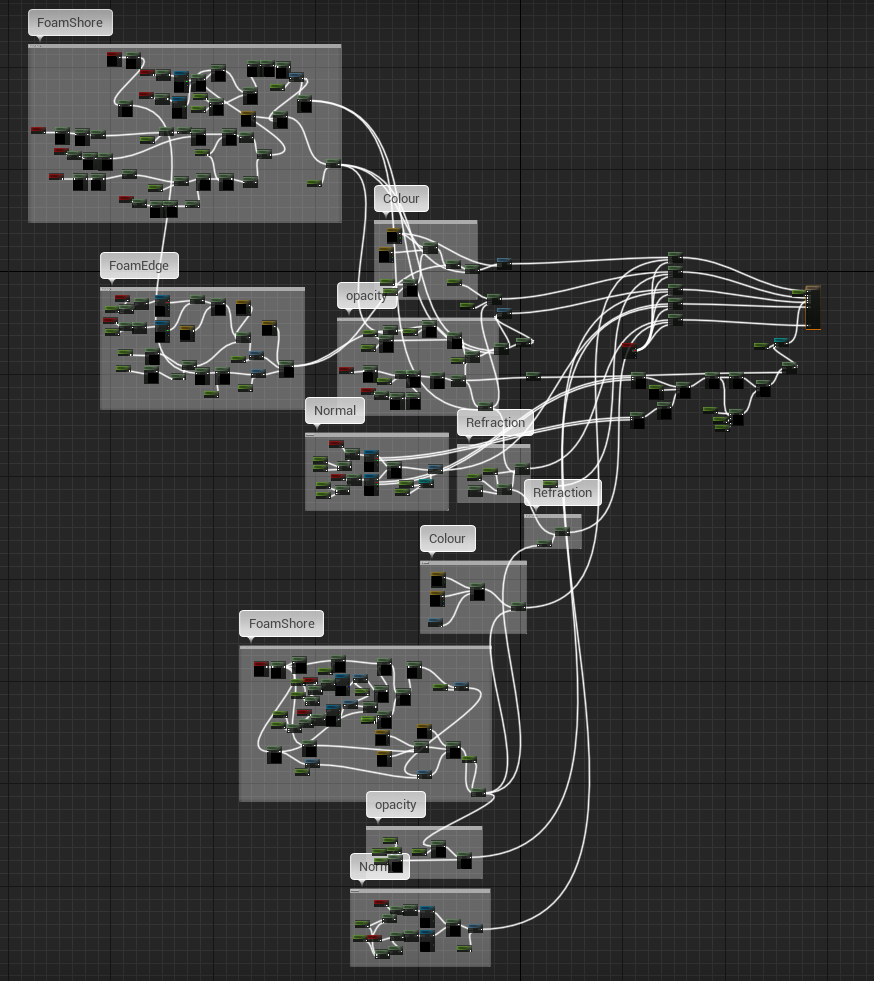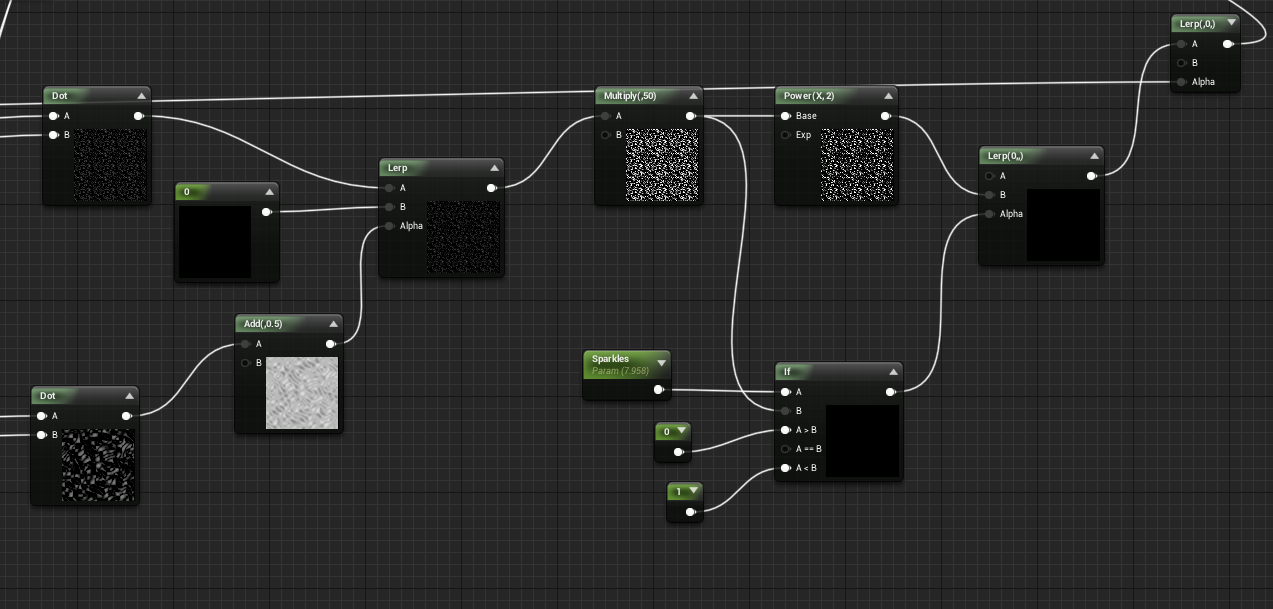On Monday I finished up the scene, fixing texel density in places and adding a hollow blocking volume to the outside of the plinth to stop the player from jumping off into the abyss. I deleted some unnecessary material instances and pasted their values into the original material, and also combined some similar materials into one by using static switch parameters, since it would be cheaper to have one material and a few material instances than having several materials all using similar functions.
 |
| My water texture is now looking meatier than ever! |
For the water texture, I also vertex painted the waterfall to blend into the lake a bit to get rid of the seam where the foam was being cut off abruptly.
After doing this, I decided that I wanted to make my water shader look a little more pretty, so I went back to the water breakdown I followed before where Adam Homoki said this unassuming little paragraph: 'The little sparks were mentioned in the talk, there’nothing special actually. It uses the normal map’s different channels formed into a dot product, followed by some multiplication, clamping, raising the values to a certain power.'
So, I had a go:
 |
| I fed the R and G channels for my two differently sized normal textures and plugged them into separate dot products, then lerped one with the other to reduce the amount of sparkles while maintaining a round shape. I fed this into a multiply and power node to increase the brightness in the emission later, and fed it into the lerp as an input node. The alpha was controlled by an if node and a scalar to easily adjust the amount of sparkles visible, then the lerp after that was just feeding it into the world position offset shoreline mask. |


No comments:
Post a Comment